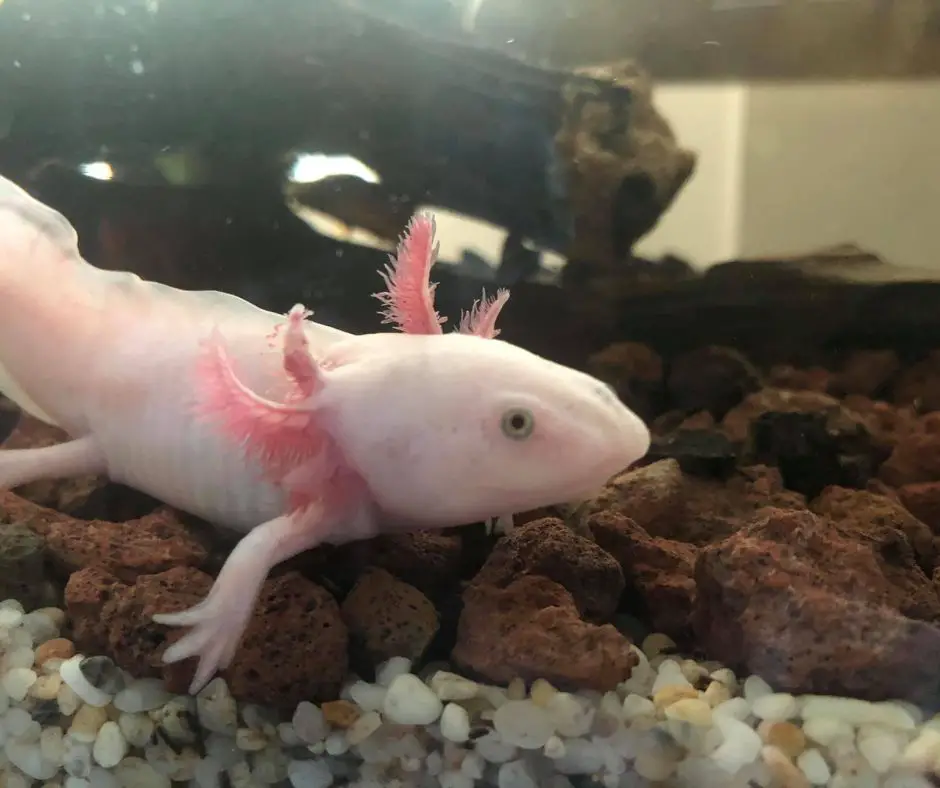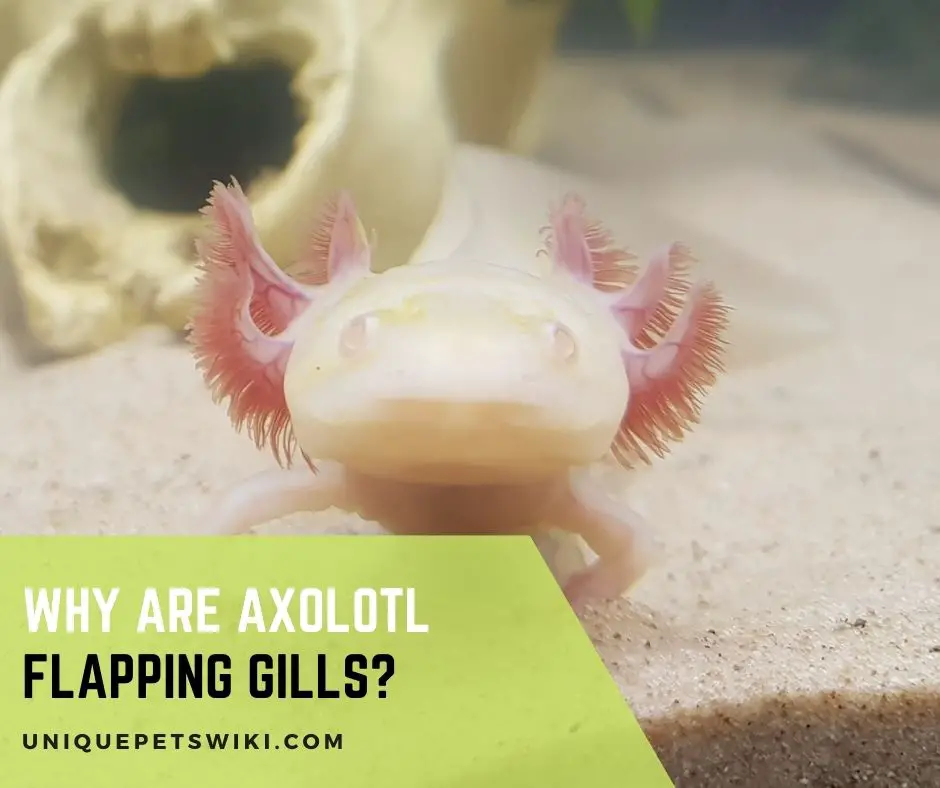Axolotl flapping gills or gill flicking shouldn’t get you startled. In fact, you should be concerned if your axolotl doesn’t flap its gills from time to time.
Gill flicking or flapping in axolotls helps the movement of water around their filaments to aid gaseous exchange.
In simple terms, for them to breathe in the water, their gills will flap to allow their filaments to extract the dissolved oxygen from the water around them.
However, you should only be concerned if the flapping is frequent and prolonged.
Frequent and prolonged gill flapping could be a sign of disease that needs to be addressed as soon as you can.
So if you were worried about your axolotl gill flapping as being a sign of illness/stress, relax and let’s look at what other signs you should look out for to know if your axie is sick.
In the end, you should be able to know if your axie is in good condition or not. Read on to learn more!
Contents
Why Are Axolotl Flapping Gills?
Axolotls flap their gills for two main reasons – To move the water around their filaments to facilitate gaseous exchange and a sign of pain and discomfort.
But before we delve into details of why axolotls flap their gills, let’s talk about what gill fapping is.
To a kid who is just seeing this behavior for the first time, how best can you explain it to him?
Let’s say gill flapping is similar to the action you make with your nose when you suddenly perceive a foul smell.
When axolotls gills flap, the gills constrict to take in dissolved oxygen and then relax again. This doesn’t happen frequently, but as often as your axolotls need some oxygen to breathe.
Get More Oxygen
About 5-8 seconds on average, axolotls flap their gills to get more oxygen. They do this while lying still at one spot and appear very relaxed.
Gill flapping helps to shift the water around their filaments and dissolved air, which helps them to get more oxygen without moving.
The fact is that as long as the water is moving against the gills, they can take in oxygen when the gills flap.
Also read: Do Axolotls Need Air?
Pain/Discomfort
Note that gill flapping in axolotls is a normal behavior as they do this from time to time to take in oxygen. That is by the way between the intervals of 5-8 seconds on average.
Gill flapping becomes a problem when it is persistent, continuous, and occurs at the interval of 1-2 seconds.
When gill flapping is overly frequent within short intervals, it either means that their gill function is compromised, irritated, inflamed, or that they are sick.
Gill flapping as a result of illness are caused by one or many of these factors:
- Stress.
- Dirty water.
- Low oxygen in water (stagnant water).
Also read: Full Requirements & Water Conditions for Axolotl in Captivity
What Should You Do If Axolotl Flapping Gills Continuously?

As discussed earlier, it’s important you understand when to panic about your axolotl flapping its gills.
If this occurs every so often (between 1-2 seconds), then you must first check to confirm that your water parameters are right.
This is because one or two problems with the water can cause stress or illness that makes your axolotl gills to flick too frequently.
Besides checking and correcting your water parameters where necessary, other things you can do to help your pet include:
- Using a good air bubbler. This works like air stones – it will increase the amount of dissolved oxygen in the water.
- Adding air stones to the tank (water).
- Check the water parameters and correct any fault if necessary.
- If after checking your water parameters you found out that everything is under control but your axolotl keeps flapping its gills, take it to the vet, it might be seriously ill.
Also read: Do Axolotls Need A Bubbler?
Fish Tank Bubbler
- 🐠【Buy 1 get 4 accessories】 the air stone kit includes a 2-inch Nano air disc stone, 1 control valve, 1 check valve, 2 suction cups. Please note air tube and air pump are not included
- 🐠【Ultra-high dissolved oxygen】 this upgraded hygger air stone releases the bubbles more smaller, denser, uniform, which makes double oxygen dissolving rate in water. Please note air tube and air pump are not included
- 🐠【Produces small & dense bubbles quietly】 push out amounts of smaller and denser smooth bubbles than others, when the bubbles burst into the water, the sound is quieter. It can creat the atomization effect and bubble beams will make your aquarium like a fairyland
- 🐠【Weighs enough to sink】 5.2oz/150g, easily sits on the bottom without suction cup. The diameter of air diffuser area is 2 inch, not including the plastic border. Suitable for freshwater and saltwater
- 🐠【Driven by 2W or larger wattage air pump】 the 2 inch airstone is compatible with 4mm airline tube, the output air flow is 1L/Min. Please NOTE the deeper you put the air stone under water, you may need use a larger wattage air pump to drive it.
Last update on 2022-12-29 / Affiliate links / Images from Amazon Product Advertising API
Final Words
An Axolotl’s gills are made of soft tissue, which is similar to the gills of a fish. The gills are located on either side of the axolotl’s head and are the most external part of the axolotl’s body.
The gills are used to extract dissolved oxygen from the water that the axolotl breathes. The gills have numerous blood vessels that carry oxygen throughout the body.
So when it breathes (takes in oxygen and gives out Carbon Dioxide), its gills flap (that is open and closes) at intervals between 5-8 seconds.
But if you notice your axolotl’s gills flapping excessively then that is a sign that something is wrong.
You should first check your water parameters and correct any fault where applicable. If the excessive flapping still continues, you should take the axolotl immediately to a vet to see what the problem is.

